At this Kansas college, students do as the Romans did: They declare war
Outside, while dense fog and ice-packed streets created a winter of discontent, 18-year-old cheerleader Marley Battles (her name could not be more apt) was in the basement of the Baker University Alumni Center roundly kicking football player Mike Burke’s butt.
“He’s getting beat real bad,” the Overland Park freshman said, rolling dice in a game of ancient war that, over the last 10-plus years, has proven, to the surprise of the professor, to be one of the most popular, if not the most popular, winter-term classes at this tiny Kansas college, enrollment 900 at the main campus.
Winter terms, Jan terms or interterms, as some colleges call them, are often times for relaxation. While some students at Baker have spirited away to Italy, Belize, Ecuador or the beaches of Hawaii, Battles and Burke are among 32 students lucky enough — the class often fills to capacity immediately — to be leading their own mini-armies with some 250 toy soldiers (each standing less than an inch tall) thrashing each other across tables on felt battlefields.
At Battles and Burke’s table, her fourth century archers — Greuthungi warriors from what is now Ukraine — are raining hell on Burke’s woebegone Carpi soldiers, part of the Dacian tribe from what’s now Romania.
“We have heart and a great leader,” Burke said of what would soon be his decimated troops in the era of Valentinian I, Roman emperor in the year 364.

“We’re in Italy right now,” Josh Herrmann, 19, a freshman from Sabetha, north of Topeka, noted of the battle terrain. He was acting as referee for this match. “We’re fighting in Italy.”
At six other tables, battles raged between late-Roman era armies that, three weeks prior, none of the students had ever heard of: the Gepids from near what’s now Romania and the Quadi, another Germanic tribe, in what became the Czech Republic, the Blemmyes from what’s now Sudan and southern Egypt, and early Picts or “painted people” of Scotland. Thirty-two armies for 32 students: 10 Roman, three Persian and 19 from so-called barbarian tribes.
“Before this, I knew nothing about this time period,” said Brian Hare, 22, a senior chemistry major who transferred in from Truman State University in Missouri. His soldiers are Romans. “I knew nothing about the late Imperial Romans. I knew nothing about war-gaming. I wasn’t really a history person.
“Now I’m taking this class. I’m having the time of my life.”
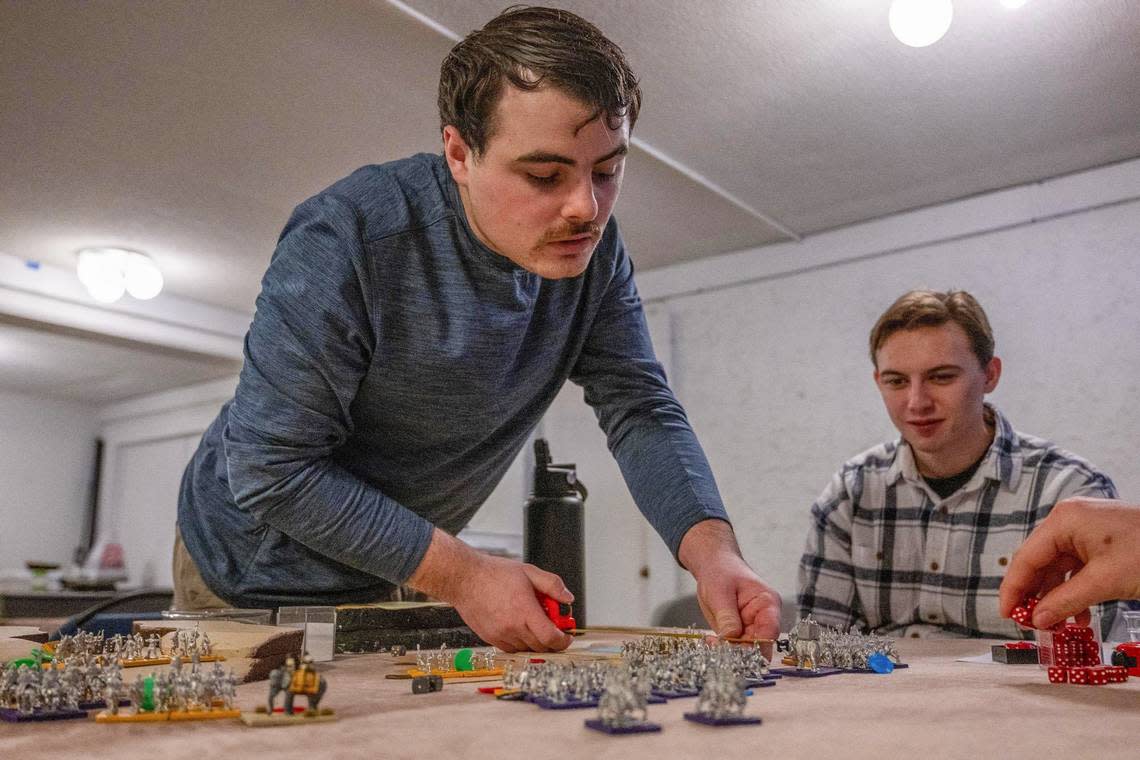
No one is perhaps more surprised and pleased than John Richards, an associate professor of history, who, in his 27th year at Baker, strides like Mars — albeit a genial version of the Roman god of war — over the class, having turned what he describes as his “nerdy” childhood hobby into a signature winter class.
“I’m overwhelmed by it. I think it’s hysterical,” Richards said, laughing. “I’m 63 years old and I’m still playing with army men.”
Richards said he began painting toy soldiers when he was 9. As he tells his classes, the roots of such war-games date to at least the 1800s, when the Prussia army developed “kriesgsspiel,” or “war-gaming.” Army leaders used miniature soldiers spread across maps to teach officers battlefield tactics.
Then, in 1913, famed author H.G. Wells published “Little Wars,” a game book laying out strategies and rules for anyone who wanted to play war using miniature hollow lead soldiers, then made by the W. Britain toy company. A hobby was born.
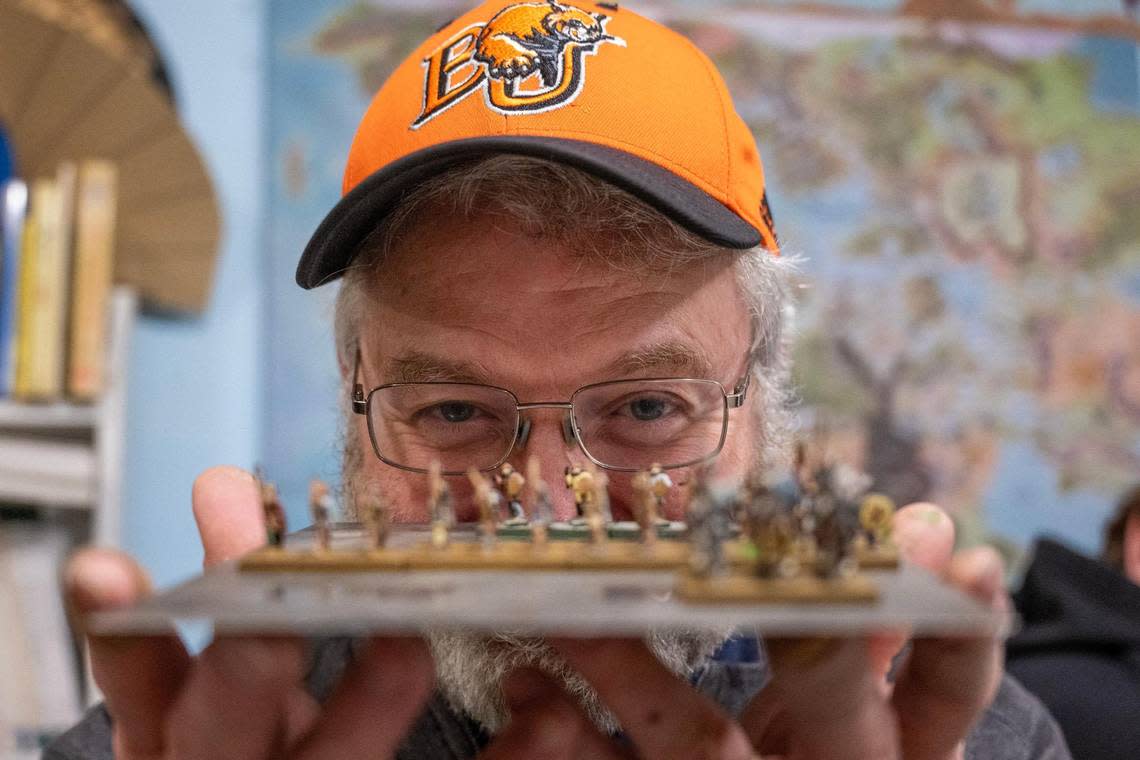
It was students, invited to Richards’ home, who noticed his collection of soldiers and suggested he start a class. After an initial try in 2011, the current incarnation of “Get the Lead Out: Understanding History Through Tabletop Wargaming” started in 2012.
“So one of the things that they learn,” Richards said of his students, “and I emphasize this: This is not real war.”
The game is not simple, involving rolls of sometimes dozens of dice, and strategy as to where to place soldiers. Charts detail the strengths and weakness of cavalry and sword-wielding and shielded infantry. Do soldiers have javelins, slings, light armor or heavy armor? Are they battle-tested veterans or “levy,” meaning conscripted soldiers, like old men and boys, taken off of farms and likely to flee.
Crush a unit of soldiers beneath a hail of catapulted stones and it’s time to roll the dice to check the rank’s morale.
“Do you want to hear about my elephant?” offered Isaac Klug, 19, of Newton, outside Wichita. His army is from the Sassanid Empire, also known as the Second Persian Empire. His troops, bolstered by an elephant named Alfred, were laying waste to 20-year-old Nakos Benton’s army from the Kingdom of Armenia.
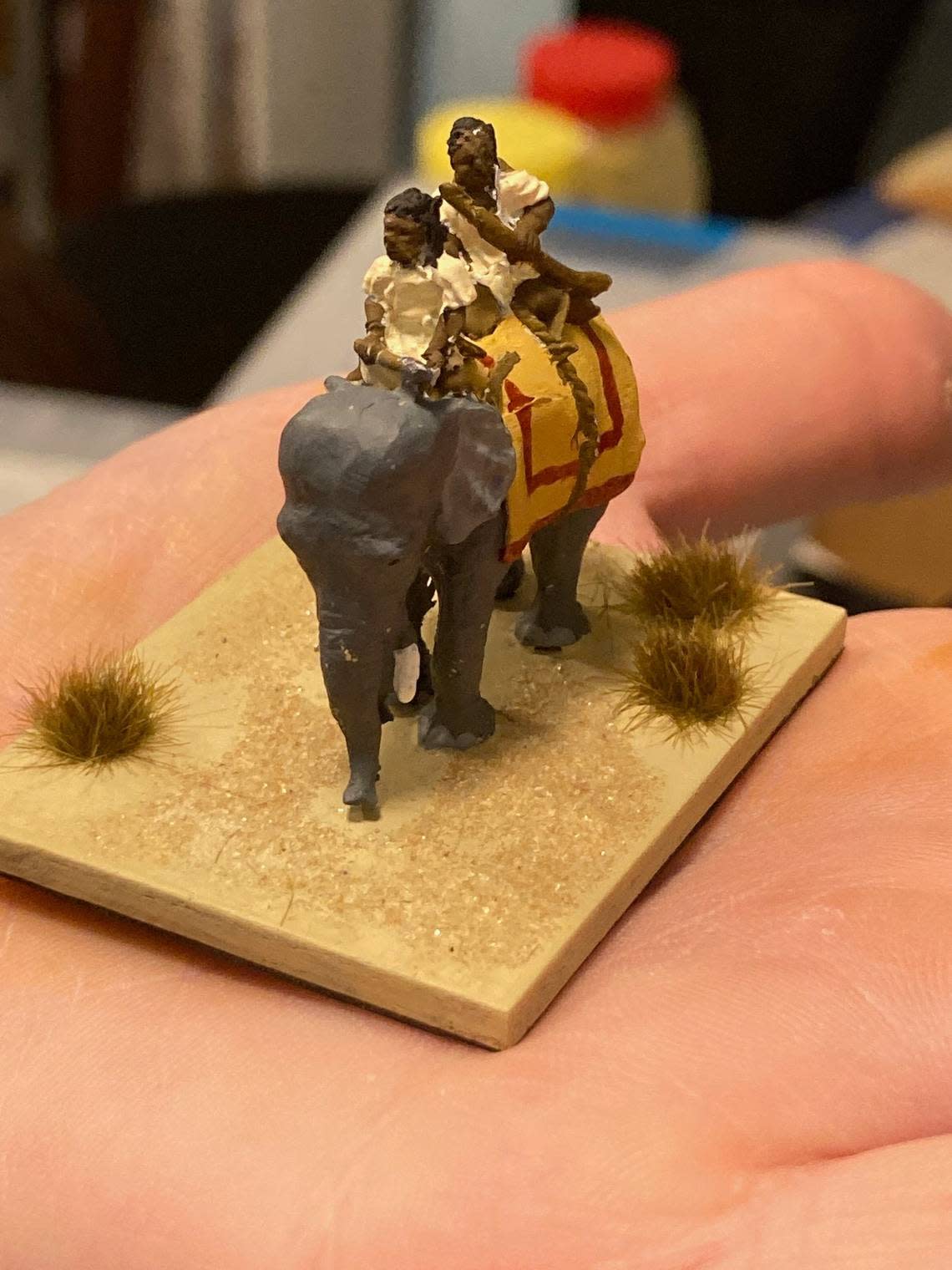
Klug knew about Alfred because every student receives a binder specific to their army, filled with battle reports and dispatches from the leaders — students who had that same army in previous years. Klug opened the binder.
“There is still lots to figure out about this group of Sassanid misfits,” last year’s leader wrote, “but some things are clear. Elephants are super cool, but Alfred (Lead elephant of your new war elephant corps) is a force that many cannot handle. Use him to demolish the competition.”
So Klug had.
“This guy, basically, he is just crazy powerful,” Klug said. “I didn’t even know that elephants were used in war before. I’ve never played a game like this before.”
As much as the class is about fun, it’s about historical research and writing (10 battle reports) and facts that might not crop up in any other class. Such as the story of Shapur II, or Shapur the Great of Persia, sometimes known as the Sasanian King of Kings and perhaps, Richards said, the only king to be crowned in utero.
“They put the crown on this mother’s belly,” Richards said.
Surely the use of dice makes the game too much about luck, some suggest.
“I’ll tell you what,” Richards said, “Julius Caesar was rolling dice every time he went into battle. There’s no way you can control 50,000 people fighting. So the dice really come to reflect the chances that are associated with face-to-face combat at that level.”
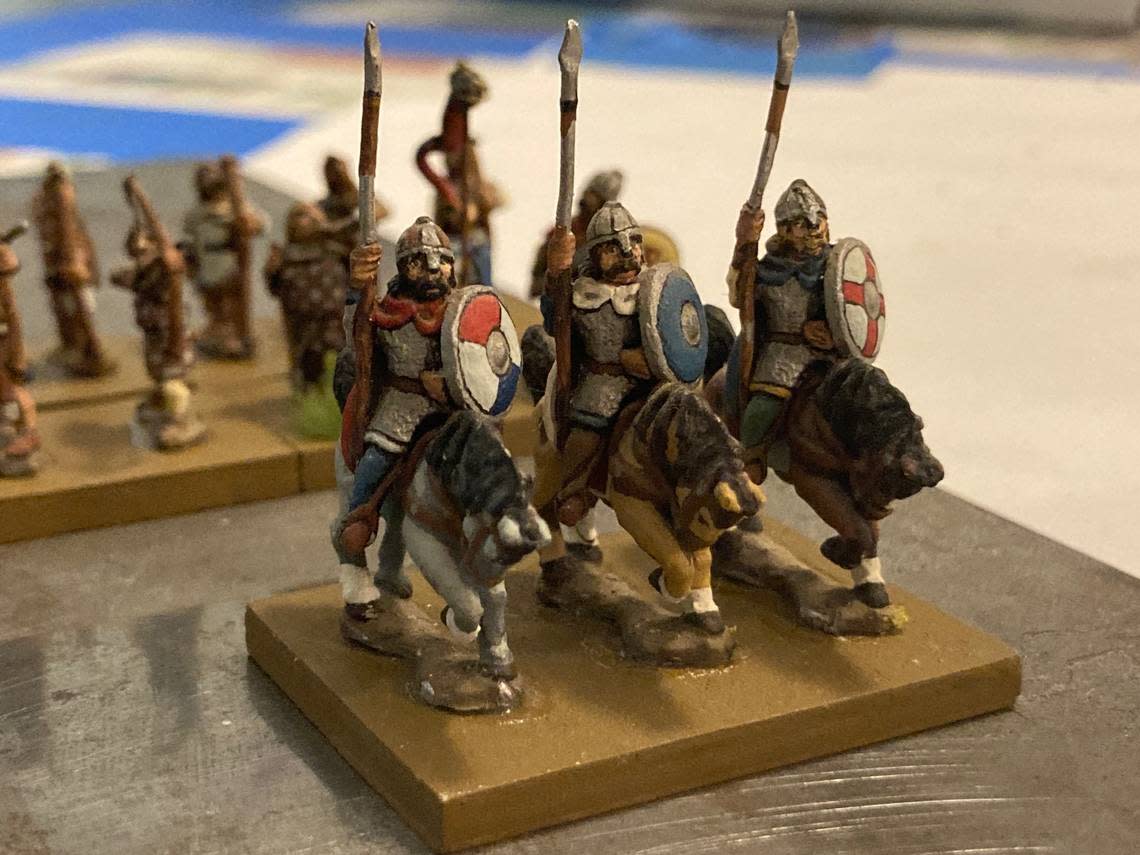
At the end of the class, every leader is required to write a letter to the new commander of that army next year. Richards’ favorite, perhaps the most poetic, comes from 2016 and student Timothy Ruble, who led the Greuthungi.
“I find it difficult,” he wrote, “in these final hours, to accept my fate. I lie here in my tent haunted by memories of battles lost, and the all too familiar faces of soldiers whom I sentenced to death with my orders to charge, but no more can I utter these commands. My hands tremble now as I grow weaker with every breath I take. I can feel the chills running down my spine, and the icy touch of death itself waiting for me to draw my last breath. I fear I have little time left so listen closely to what I have to say.”
In 2014, student Michelle Critchfield, leader of the Arab Tanukhids, put together what she titled “The Queen’s Diary,” beginning every battle report with quotes from Sun Tzu’s “The Art of War.”
“So in war,” she quoted, “the way is to avoid what is strong, and strike at what is weak” and “Can you imagine what I would do, if I could do all I can?”
“My troops,” Critchfield wrote, “put up a valiant effort on the battlefield this morning. However, it was not enough.”
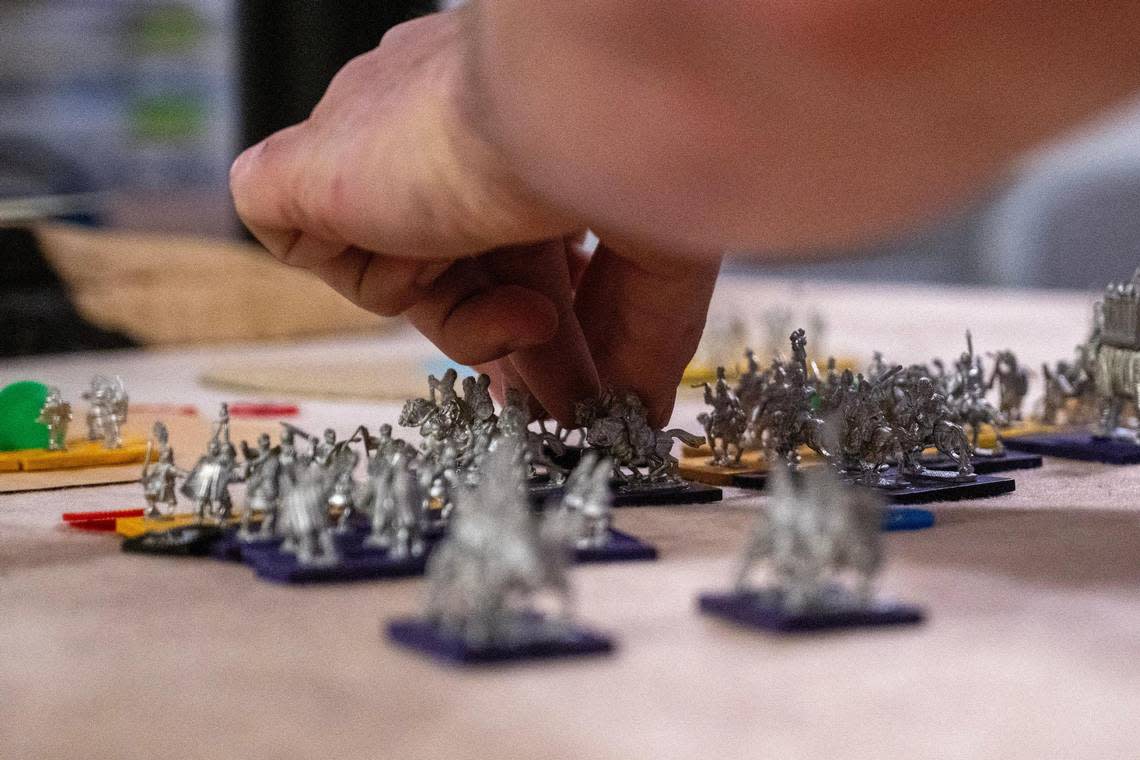
With 32 students, Richards conducts a bracketed war tournament like the NCAA Final Four. Over the years, he said, he has heard from alumni who want him to put together a summer tournament for them. He’s considering it.
On this day, Jason Bell, a student in 2018, stopped by the class at Richards’ invitation. Like many in the class, Bell was an athlete at Baker, a 330-pound offensive lineman. A lot of athletes train at the university over winter break, so the interterm class fits their schedules.
Age 27, Bell is now a 230-pound first lieutenant in the U.S. Army who was so inspired by the class, he’s made miniature war-gaming part of this life. He competes using a World War II version. In Richards’ class he, too, was the leader of the Greuthungi.
“This is the talk of the university,” he said of the class. “This is what everyone knows.”
He flipped open the binder to his own dispatch.
“The Earth is crumbling,” he had had written. “The Roman army marches ever closer to our borders. My people suffer from the wrath of the gods. … The bonfire at the shrine of Wodin tells me something. Wodin demands war.”
At a table nearby, April Thomas, 20, from Independence, leader of the early Picts, was defeating Gavin Blanchard’s Caledonians.
“This is going to come down to you having more troops than me,” Blanchard, 19, of Lawrence said. Defeated twice, he would be out of the tournament, which ends with the last class on Friday.
Behind them, cheerleader Marley Battles and her opponent cleared their troops and noble dead from the tabletop.
“I’ll come back at 12,” Battles, the victor, said, “to fight again.”
